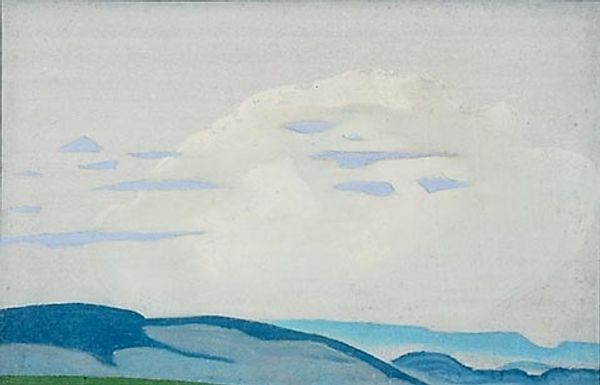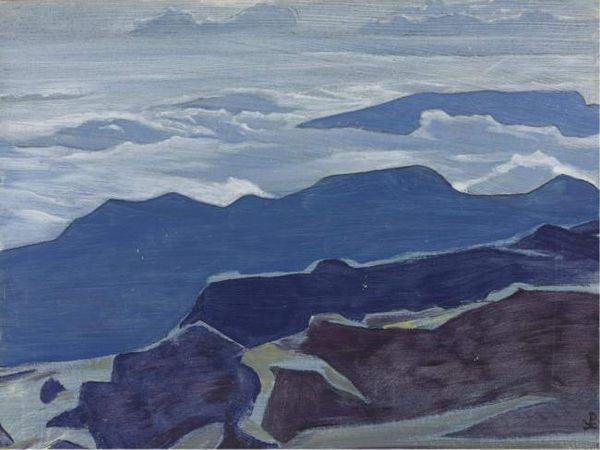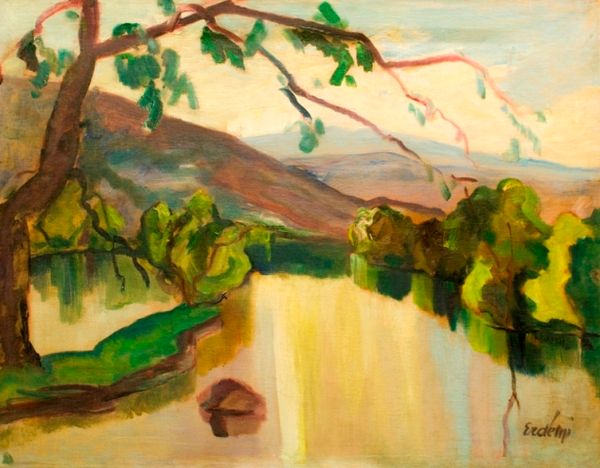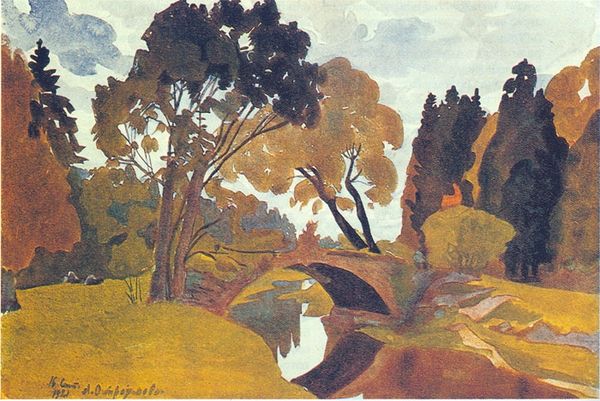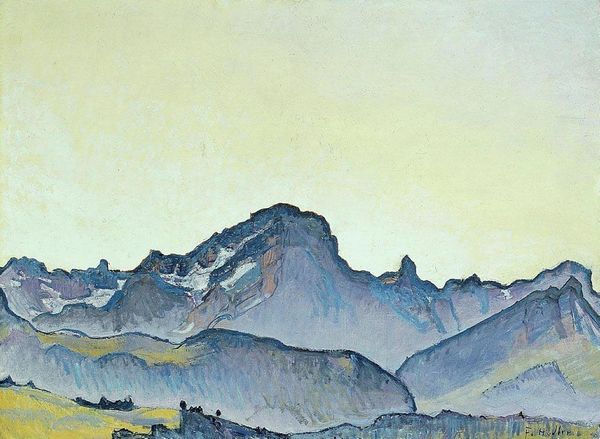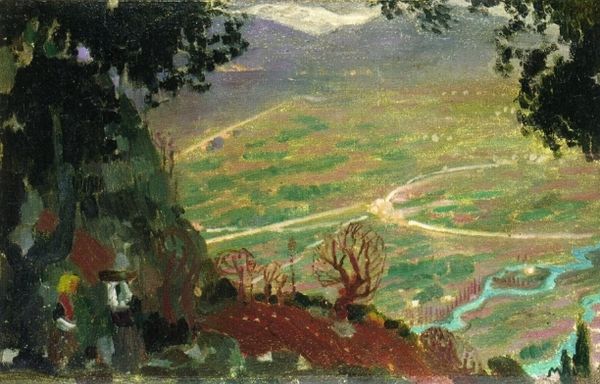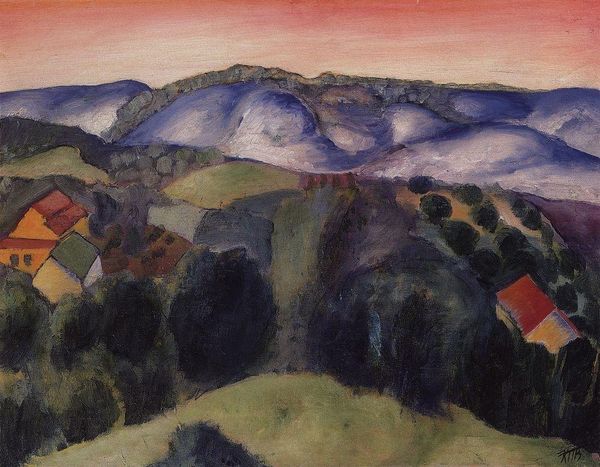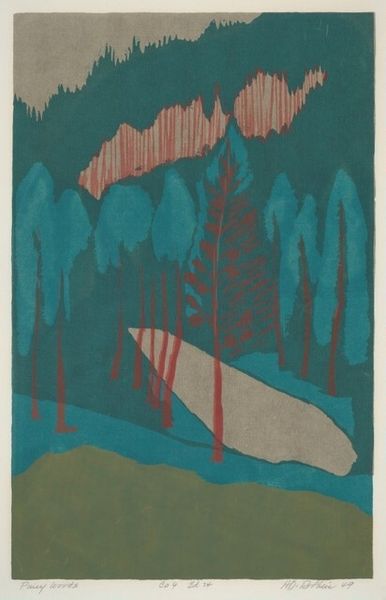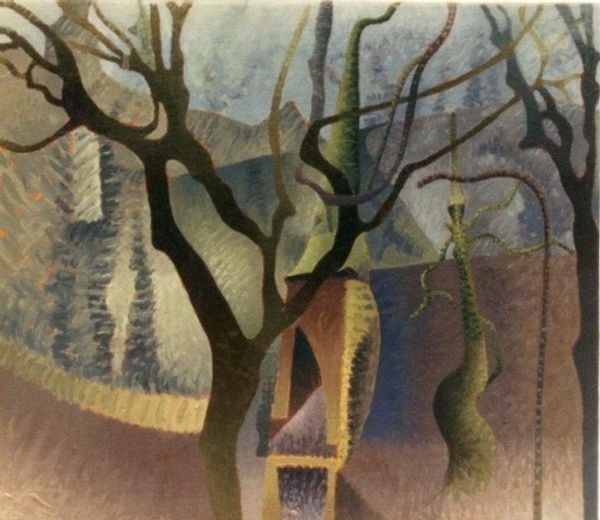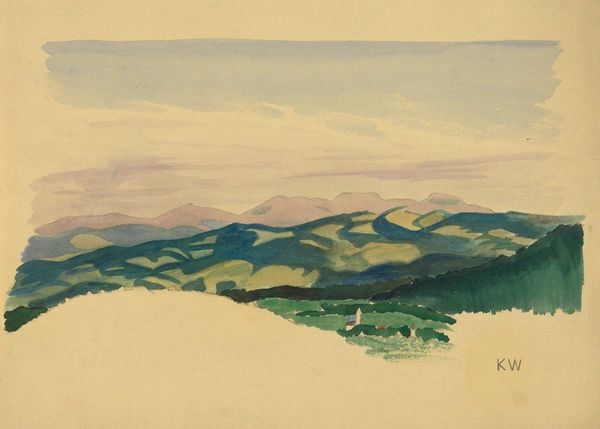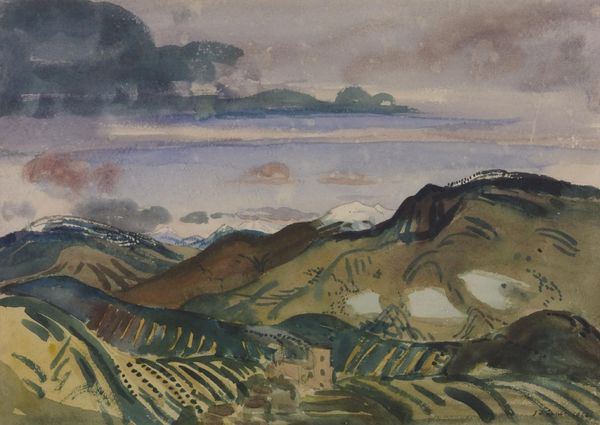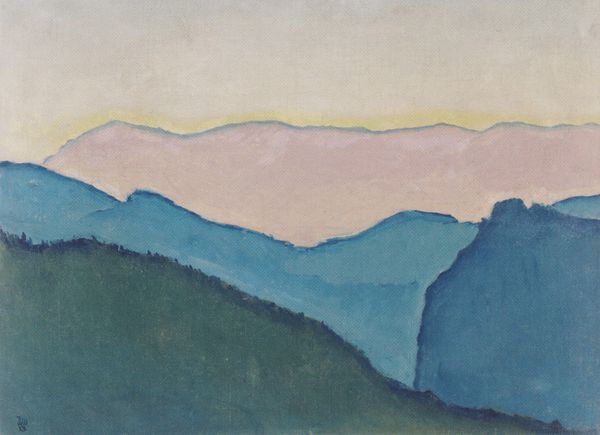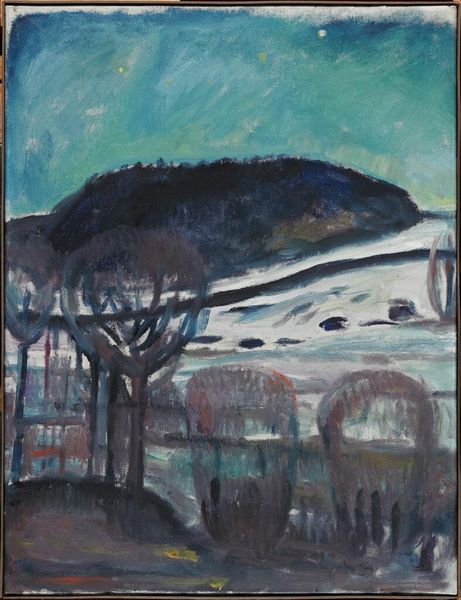
#
tree
#
sky
#
abstract painting
#
possibly oil pastel
#
handmade artwork painting
#
oil painting
#
fluid art
#
acrylic on canvas
#
forest
#
mountain
#
painting painterly
#
watercolour bleed
#
watercolour illustration
#
watercolor
Dimensions: 56 x 84 cm
Copyright: Public domain
Curator: "Pir Panjal," painted around 1925 by Nicholas Roerich. What strikes you first about this piece? Editor: Well, honestly, a sort of quiet melancholy. It's not depressing, more like a reflective stillness. A sort of...pensive landscape. Curator: I see what you mean. Roerich was deeply interested in spiritual landscapes, and Pir Panjal refers to a mountain range in the Himalayas. He spent a good deal of time in that region. Perhaps that emotional stillness comes from the imposing, ancient quality of mountains themselves. Editor: Exactly! And the way he's rendered them—those muted greens and blues, almost feels like he's capturing a memory. It’s like an archetype of a mountain rather than a precise portrait. It triggers that kind of collective memory, something primeval. Curator: He simplifies the forms quite drastically, doesn’t he? It's interesting to me that he wasn't going for pure realism, given his meticulous nature. These landscapes weren't simple travel mementos, rather tools. The palette is subdued, there are no people; you are left to wrestle with your own inner space, almost invited into meditation by the image. Editor: And think about mountains as symbols. They’ve been potent images across so many cultures, representing everything from obstacles to enlightenment. Those silhouetted trees reaching upward just heighten that feeling of aspiration. Each cultural peak aiming toward some invisible apex. It all points up, up, up. Curator: Definitely. Roerich, deeply influenced by Theosophy, uses art almost as a sacred technology to invoke states of consciousness, right? "Art unites humanity", he once said. These landscapes function like mandalas, entry points to contemplative insight, with or without words. Editor: That's it! Each element—the trees, the mountains, the almost ethereal sky—it’s a visual language. Roerich presents this scene in a way that resonates far beyond just a literal depiction. The cultural memory embedded is accessible because he touches on universal yearnings. Curator: It does, doesn’t it? Well, getting a little closer, and perhaps spending a little more time with this Roerich, I must say it continues to quietly unveil layers I wouldn't see upon a casual glance. Editor: Absolutely. There is something haunting about Roerich that will pull you in and it lingers.
Comments
No comments
Be the first to comment and join the conversation on the ultimate creative platform.
